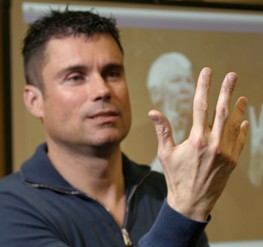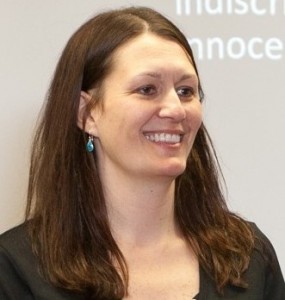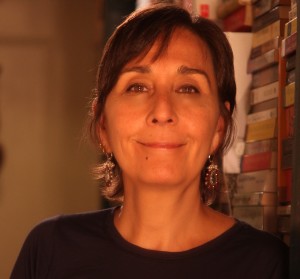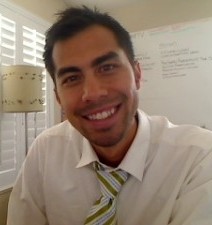
Author Amy Williamson sheds light on the coda experience and how crucial differences in their worldview from an “in-between space” are indispensable, yet often undervalued, assets to the sign language interpreting field.
I recently attended an interpreter retreat where the purpose was to examine privilege, how it manifests in our individual work lives, our relationships with each other, and within the sign language interpreting profession as a whole. Privilege is a topic that makes for a hard discussion for any group of people. Those of us in attendance included new interpreters, been-around-the-block interpreters, urban, rural, hearing families, deaf families, deaf, hearing, coda, partners of deaf people, and siblings of deaf people. We committed to a weekend of taking the time and space to look at what each of us has to offer. We talked about being marginalized, feeling marginalized, and how we marginalize each other.
We were honest.
We were vulnerable.
Our conversations were raw and invigorating.
It was in this setting that I was, again, pushed to face a reality that I have encountered periodically over my 20-year career…our field does not understand, appreciate, or value what it means to be hearing and raised in a deaf parented home.
The Invisibility of Between
Codas live in an in-between space within the sign language interpreting profession. We are not hearing. We are not deaf. As such, we are often not seen nor valued. We are; however, both vilified and worshiped in good measure.
From our hearing colleagues we are told that we are lucky to have deaf parents and that it must have been easy to become an interpreter. We are told that our skills are not up to par because we didn’t attend an Interpreter Preparation Program and hearing interpreters tell us that we make them nervous.
From the deaf people we work with we are told that they are relieved we are present because they can relax and understand what is being communicated. We are also told that we can’t be trusted because we may tell our deaf family members their business.
Our experience affords us the opportunity to apply authentic, connective experience and insight to our work. Is this threatening or is this assuring?
An example of the invisibility of between is the lack of coda involvement at the formal and informal decision-making tables within the field. How many non deaf codas have there been over the past few years on the RID National Board? How about within the RID committee structure? How many codas are there on state chapter committees and executive boards? How many codas are there in the wise circle of professionals that you call on when you need to talk out an issue? Whatever you answer, I will argue, as does Dennis Cokely in his post, Vanquished Native Voices—A Sign Language Interpreting Crisis?, that it is not enough.
What does the absence of this insightful perspective cost the field in the form of forward progress?
The Footings of Invisibility
The Difference That Divides
I grew up the child of intelligent, savvy, funny, competent, employed, educated, honest, bilingual, loving parents who were each part of large extended deaf families. Being deaf in my family is normal. I also grew up being told by every hearing person I encountered (including my own hearing family members) that my parents weren’t good enough. That it was my job to take care of them. It was my job to look out for them. Communicate for them. Be their ears. I was constantly pitied.
I was marveled over…the fact that I could hear and they could not was viewed as a miracle. “Bless your heart, honey” was a constant refrain in my southern existence.
Even today, when I tell people my parents are deaf I am always asked (without fail) “both of them?” as if that would be the end of the world. The second question (without fail) is “what is it like having deaf parents?” as if I have anything to compare it to. I was made fun of by other kids. I was always different…but not in the way that all kids at some point think they are different. I was coda different.
Every coda has this experience. Our experiences vary by degree and extent. Our coda experiences vary as the temperament and personalities of our parents vary, but there is an experience that is common to all codas. The experience that unifies us is that we all get the same reactions about our parents from people who simply don’t know any better.
We are told and whispered all of this, yet; the people being talked about are actually the parents who took care of us. Shielded us from danger. Fed us. Loved us. Yes, parented us.
Conflicting Realities
Never do these well-meaning family members, teachers, friends, strangers say to our deaf parents what they say to us. They wouldn’t dare. As young children we are left holding onto it all…most of us choosing (consciously or unconsciously) not to share what we were told with our parents. We held these conflicting realities and were too young to know what to do with them or about them.
Many of us grew up in a home where our deaf parents hated hearing people (with good reason given discrimination and oppression) and were free in talking about their distrust and hate for the hearing community. Many of us developed our own hate for hearing people after witnessing and being victim ourselves to injustice after injustice. We had the hearing community pitying us and telling us we weren’t deaf, because by miracle we could hear. We had our deaf parents telling us we were hearing, yet also saying that they hated hearing people. Confusing is an understatement.
The Aftershock
As a result, from a very young age we decide what we are going to believe. Some of us drink the Kool-Aid and agree with the hearing community’s assessment of our parents. We believe them when they tell us that we need to take care of our parents, look out for them, communicate for them, even pity them. That we are miracles and that it is so very sad that our parents are deaf. Poor us. We believe that ASL is a bastardized form of English and is substandard. We are ashamed of our families.
Others of us come out fighting and defend our parents and the deafness within us with a vengeance. We shoot verbal (or physical) daggers at anyone that dares attack the reality and validity of our existence. In 5th grade at least one of us is sent to the Principal’s office for giving what-for to the biggest kid in the class for calling her parents ‘dumb.’ We hate hearing people for putting us in the position to question our parents’ abilities, intent, and love.
Then there are the rest of us who vacillate between the 2 extremes yet usually settle somewhere in the middle. We find a way to navigate between our deafness and our hearingness, yet never really feel a part of either.
We are all coda. Not deaf. Not hearing.
We are somewhere between.
Depth of Perspective
Our uniqueness doesn’t have to do with language fluency. Defining a coda by language fluency or native/near-native/native-like signing fluency misses the point completely. Some of us grew up not knowing how to sign fluently ourselves. Many of us fingerspelled everything we said to our parents. Some of us spent the first few years of our lives assuming we were as deaf as our parents and were perplexed when we were not taken to the school for the deaf on our first day of Kindergarten.
We are not all interpreters and those of us who are don’t have it come ‘naturally’ to us. We work very, very hard at a very, very difficult task, interpreting. Some of us do it well. Others of us struggle.
Our insight comes from spending our developmental and formative years in this between space.
We have brokered between the deaf and hearing worlds our whole life. Disdain. Joy. The mundane. We have done it or seen it communicated directly. We learned fast and early what it took for the local mechanic and our dad to understand each other. This unique experience leads to a skill that cannot be taught in an IPP. It can’t be learned by having a deaf sibling or deaf partner even. It’s not about ‘knowing’ sign language your whole life. Our uniqueness is about being parented by a deaf person. A person that you can’t just walk away from, avoid, or never see again. A person who is oppressed on all sides…by their families, by their education, by the media, by the judicial system, by their employer, and, yes, sometimes by their own children.
The word ‘parented’ is the operative one here. It implies a bonding, a relationship of dependence, of value sharing, of boundary teaching. We were parented by competent people who were viewed and treated as incompetent by the majority of society. A majority that takes it upon themselves to tell you how incompetent your parents are under the guise of kindness or good deeds. This experience is unique and solely a coda’s.
Deaf children of deaf parents do not get this reaction directly from the hearing people they interact with. They are pitied and vilified and objects of fetishism (this is how I describe the folks who think sign language is beautiful hand waving and don’t really get the linguistic and cultural aspects of the community) the same way their parents are. Their experience having deaf parents is unique to that relationship. They do often function as brokers within the deaf community but their experience is very different from that of hearing children with deaf parents.
Leveraging Insight
Codas have lived life in a deaf parented home after the interpreters and well meaning hearing people have all gone home. It is then that our deaf parents whisper to us what they dare not say in front of them. We continue to hold the secrets of our deaf parents and the secrets of the hearing community (including hearing interpreters who quietly share their sentiments).
As described by Alex Jackson Nelson in, Sign Language Interpreters: Recognizing & Analyzing our Power and Privilege, this experience is rich and results in a deep understanding of hearing privilege:
“Many Codas have experienced unique and complex roles, having hearing privilege in a Deaf family, straddling two cultures and dutifully providing communication access without pay. Perhaps, a deeper understanding of privilege contributes to their intrinsic connection to the fight for humanity.”
Alex goes on to state, “In my observation, many Codas possess an unequivocal understanding of privilege and power that is not easily recognized by non-Coda interpreters (including myself.)”
Perhaps, with this unique and unequivocal understanding of hearing privilege, codas still have a contribution to make to the field. After all, and as Dennis Cokely pointed out in Vanquished Native Voices—A Sign Language Interpreting Crisis?, codas have been the bedrock of our field.
What contribution do you think someone with this unique insight and perspective can play?
A Standing Invitation
I shouldn’t have to say that our perspective brings value to our profession. Retreats like the one I attended shouldn’t be the only place and time we talk about who we are and what we have to offer. Codas shouldn’t have to beg for a place at the decision-making tables of our field.
Yet, here I am. Saying it. Begging for it.
We, codas, are here. We have a lot to share. Invite us to the table. Pull out a chair for us. Welcome us.

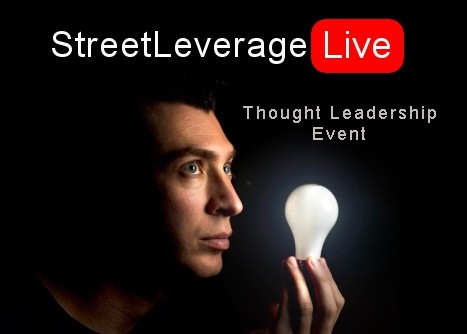
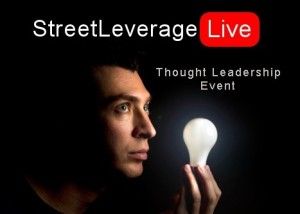 What do projectile vomiting, cancelled and delayed flights, and an unrelenting Nor’easter have in common?
What do projectile vomiting, cancelled and delayed flights, and an unrelenting Nor’easter have in common? 